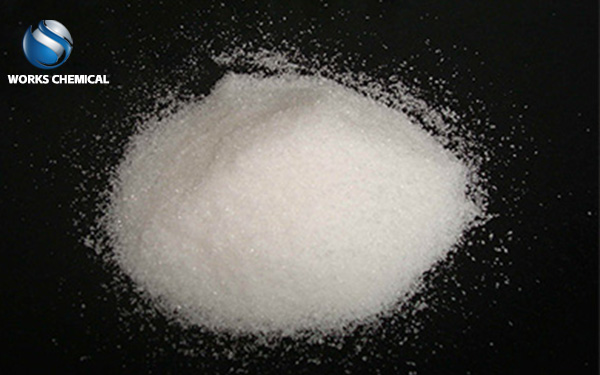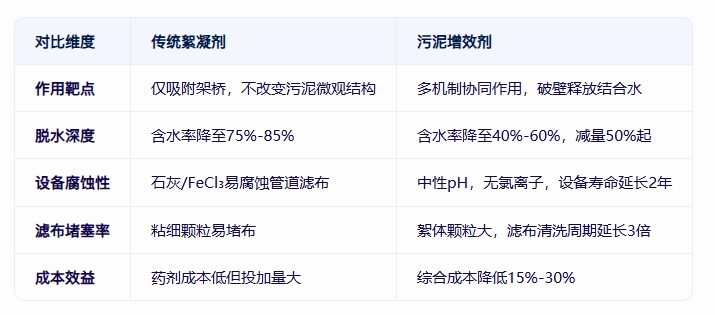
Sludge enhancer, as an innovative chemical agent, is becoming an efficient and environmentally friendly solution to solve the problem of sludge dewatering. The following is a systematic analysis of this solution from the four levels of action mechanism, technical advantages, environmental protection characteristics and practical application:

Action mechanism: The core technology to solve the problem of sludge dewatering
Sludge enhancer completely changes sludge dewatering performance through multi-target action mechanism:
Break the wall and release the bound water
Containing wall breaking agent components, it can penetrate the microbial cell wall in the sludge, release intracellular bound water (accounting for 40%-60% of the sludge water), breaking the limitation of traditional dehydration only removing free water.
Reconstructed sludge surface charge
Through charge neutralization and molecular bridging, the negatively charged sludge particles are unstable and aggregated, forming tight floc, reducing specific surface area and water adsorption site.
Optimization of slurry separation kinetics
Adding liquid skeleton components, constructing temporary permeable channels in the sludge, and cooperating with mechanical pressing, the water migration efficiency can be increased by 30%-50%.
Two, technical advantages: compared with the traditional pharmaceutical breakthroughs

Three, environmental protection characteristics: to achieve the full cycle of sludge treatment green closed loop
No secondary pollution
Does not contain heavy metals and halogens, degradation products are water, CO₂ and inorganic salt, meet the "Municipal sewage treatment plant sludge disposal Standard" (GB/T 23485-2009).
Resource enabling
After dehydration, the caloric value of the mud cake is increased by 30%-50%, which can be directly used for cement clinker production or land improvement to achieve the transformation of "sludge-building materials/soil conditioner".
Benefit of carbon reduction
Each ton of dry sludge treatment can reduce carbon 0.8 tons (instead of lime calcination process), helping the sewage plant to achieve the double carbon goal.
Four, practical application: performance data of multi-scenario verification
Municipal sludge
Process: Plate and frame filter press + synergist (dosage 3kg/t dry sludge)
Effect: The moisture content is reduced from 85% to 58%, the service life of the filter cloth is extended by 40%, and the treatment cost per ton is reduced by 22 yuan.
Industrial Sludge (Paper/Printing and dyeing)
Challenges: fiber-containing repair difficulties, decolorizing agent residues affect flocculation
Solution: Select the appropriate type of sludge synergist to use
Effectiveness: dehydration efficiency increased by 45%, mud cake moisture content ≤55%, meet the landfill standard.
Five. Selection and Implementation Suggestions
Test to determine the best formula
The suitability of different synergists to sludge was evaluated by beaker test, focusing on three indexes of mud cake moisture content, filtrate SS value and pharmaceutical cost.
Collaborative optimization of equipment
Plate and frame filter press: adopts the "low pressure feed + high pressure press" mode, and the press pressure is controlled at 1.2-1.5MPa.
Centrifugal dewatering machine: combined with polymer CPAM, drug consumption is reduced by 35%.
Intelligent control upgrade
Add online turbidimeter and pH sensor in dosing system to realize dynamic adjustment of dosing amount and ensure stable treatment effect.
Sludge enhancer not only breaks through the technical bottleneck of sludge dewatering through the chemical-physical synergistic effect, but also builds a complete closed loop from reduction to resource utilization. According to the specific sludge characteristics and treatment scale, it is suggested to determine the best implementation plan through the test to achieve the technical and economic optimal solution.